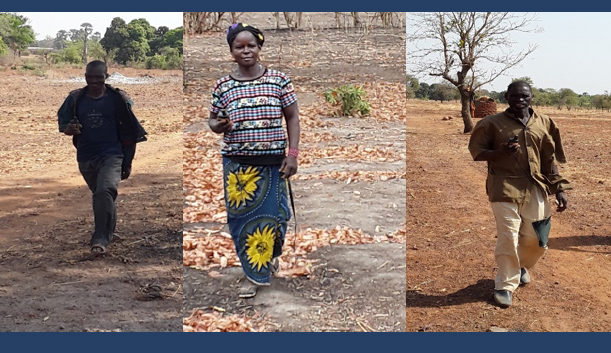How Big Is my Parcel?
Malian farmers are concerned about being better farmers, and knowing the exact size of the fields they farm is a fundamental change.

In the region of Sikasso in the Southern Western part of Mali, most farmers don’t know the exact size of their parcels. Historically, Malian farmers, like many smallholders in poorer agricultural economies, and especially those who remember the years of colonial rule, might have been worried about having their fields measured because land areas were used as a basis of taxation, and other burdens. Though land has not been owned privately, families have used rights transferred to them based on their ancestry in a village. Thus, access to land, and field sizes, differentiate the "haves" from the "have nots." In many Malian villages, traditionally, the goal of a prominent farmer has been to contribute to maintaining equity rather than to stand out.
However, there is a keen interest from some farmers to "know the facts.” It shows how today's Malian farmers are knowledgeable, scientifically-oriented, and want to understand the "why" and "how" of agricultural development. They are concerned about being better farmers, and knowing the size of the fields they farm is fundamental.
Usually, in Mali, fields are measured with cords and by surveyors chain. Nowadays, these practices continue in Sikasso region where measurements are made by local “Organisation de producteurs” (Producer’s organization) or at farmers’ own doing. Since 2016, the Feed the Future Innovation Lab for Food Security Policy (FSP) project in Mali (PRePoSAM), has launched a large survey in two agro ecological zones (AEZ), using GPS to measure land.

Farmers’ see many benefits from these surveys:
Adama Koné who grows mostly maize, measured his plots with cords and believed to have 1.5 ha. With GPS measurements, it turns out that he owns only 1.15 ha. He was very enthusiastic about the finding, although disappointed to have less land. “This is very helpful to know so I can better plan the right amount for labor on the farm and make better decisions to increase the productivity.”
Similar results surprised N’Golo Dembélé who believed to have 2 ha of cotton out of a total of 7 ha. The GPS showed that his cotton lot was only 1.69 ha. “Now that I’ve this information, it’s much better for me to estimate the amount of organic fertilizer I need. This information will also help me estimate the productivity of my parcels, and assess the effectiveness of new practices and inputs I adopt.”
One of the immediate benefit comes with the use and application of inputs. The labels on the seed and fertilizer bags, for example, tell how much to apply per ha and now farmers have a better sense of how much to buy and plan. This is a very first step towards understanding the rate of use of fertilizers and pesticides in the country, and in making recommendations on proper input dosages.
Chata Traoré grows rice, which is the main source of income for her. She had never measured her parcel before, and thought she had 0.5 ha. In the 2017-18 measuring campaign, she found out that she only owned 0.27 ha, almost half less! She much appreciates to know this because not only can she better plan the amount of fertilizer to buy, she also explains that she “can better evaluate the land productivity. This is a useful investment for all.”
This positive feedback and experience of FSP is shared with some government agencies especially the "Cellule de Planification des Statistiques du Secteur du Developpement Rural (CPS/SDR)" which plan to use GPS mesures in their coming great survey on the "Recensement Géneral de l'Agriculture (RGA) au Mali."



 Print
Print Email
Email




